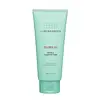What's inside
What's inside
 Key Ingredients
Key Ingredients

 Benefits
Benefits

 Concerns
Concerns

 Ingredients Side-by-side
Ingredients Side-by-side

Water
Skin ConditioningMyristic Acid
CleansingGlycerin
HumectantMethylpropanediol
SolventPotassium Hydroxide
BufferingCoco-Glucoside
CleansingLauric Acid
CleansingPalmitic Acid
EmollientStearic Acid
CleansingMelaleuca Alternifolia Leaf Extract
PerfumingSalicylic Acid
MaskingGlyceryl Stearate
EmollientMelaleuca Alternifolia Flower/Leaf/Stem Extract
Skin ConditioningMelaleuca Alternifolia Leaf Water
AntimicrobialMelaleuca Alternifolia Leaf Oil
AntioxidantCentella Asiatica Extract
CleansingSorbitan Olivate
EmulsifyingPanthenol
Skin ConditioningBeta-Glucan
Skin ConditioningSodium Phytate
1,2-Hexanediol
Skin ConditioningWater, Myristic Acid, Glycerin, Methylpropanediol, Potassium Hydroxide, Coco-Glucoside, Lauric Acid, Palmitic Acid, Stearic Acid, Melaleuca Alternifolia Leaf Extract, Salicylic Acid, Glyceryl Stearate, Melaleuca Alternifolia Flower/Leaf/Stem Extract, Melaleuca Alternifolia Leaf Water, Melaleuca Alternifolia Leaf Oil, Centella Asiatica Extract, Sorbitan Olivate, Panthenol, Beta-Glucan, Sodium Phytate, 1,2-Hexanediol
Water
Skin ConditioningSodium Cocoyl Isethionate
CleansingGlycerin
HumectantSodium Methyl Cocoyl Taurate
CleansingCoco-Betaine
CleansingPotassium Cocoyl Glycinate
Potassium Benzoate
PreservativeSodium Chloride
MaskingPolyquaternium-67
Potassium Cocoate
EmulsifyingCitric Acid
BufferingFructooligosaccharides
HumectantSaccharide Hydrolysate
HumectantDisodium EDTA
Pullulan
1,2-Hexanediol
Skin ConditioningAllantoin
Skin ConditioningPanthenol
Skin ConditioningSea Water
HumectantSodium Acetate
BufferingButylene Glycol
HumectantChamomilla Recutita Flower Oil
MaskingCaprylic/Capric Triglyceride
MaskingBeta-Glucan
Skin ConditioningPhosphatidylcholine
EmulsifyingHyaluronic Acid
HumectantEthylhexylglycerin
Skin ConditioningCeramide NP
Skin ConditioningGlycine
BufferingHydrolyzed Hyaluronic Acid
HumectantGlutamic Acid
HumectantSerine
MaskingSodium Hyaluronate
HumectantLysine
Skin ConditioningAlanine
MaskingArginine
MaskingThreonine
Proline
Skin ConditioningWater, Sodium Cocoyl Isethionate, Glycerin, Sodium Methyl Cocoyl Taurate, Coco-Betaine, Potassium Cocoyl Glycinate, Potassium Benzoate, Sodium Chloride, Polyquaternium-67, Potassium Cocoate, Citric Acid, Fructooligosaccharides, Saccharide Hydrolysate, Disodium EDTA, Pullulan, 1,2-Hexanediol, Allantoin, Panthenol, Sea Water, Sodium Acetate, Butylene Glycol, Chamomilla Recutita Flower Oil, Caprylic/Capric Triglyceride, Beta-Glucan, Phosphatidylcholine, Hyaluronic Acid, Ethylhexylglycerin, Ceramide NP, Glycine, Hydrolyzed Hyaluronic Acid, Glutamic Acid, Serine, Sodium Hyaluronate, Lysine, Alanine, Arginine, Threonine, Proline
 Reviews
Reviews

Ingredients Explained
These ingredients are found in both products.
Ingredients higher up in an ingredient list are typically present in a larger amount.
1,2-Hexanediol is a synthetic liquid and another multi-functional powerhouse.
It is a:
- Humectant, drawing moisture into the skin
- Emollient, helping to soften skin
- Solvent, dispersing and stabilizing formulas
- Preservative booster, enhancing the antimicrobial activity of other preservatives
Beta-Glucan is a polysaccharide. It can be derived from the cell walls of seaweed, oats, yeast, and fungi. It hydrates the skin and helps boost your skin's natural barrier.
As an antioxidant, beta-glucan helps fight free-radicals. Free-radicals are molecules that may damage your skin cells, such as pollution.
Studies show this ingredient may be an effective wrinkle reducer as it can deeply penetrate into skin. It has also been show to help with wound healing.
Learn more about Beta-GlucanGlycerin is already naturally found in your skin. It helps moisturize and protect your skin.
A study from 2016 found glycerin to be more effective as a humectant than AHAs and hyaluronic acid.
As a humectant, it helps the skin stay hydrated by pulling moisture to your skin. The low molecular weight of glycerin allows it to pull moisture into the deeper layers of your skin.
Hydrated skin improves your skin barrier; Your skin barrier helps protect against irritants and bacteria.
Glycerin has also been found to have antimicrobial and antiviral properties. Due to these properties, glycerin is often used in wound and burn treatments.
In cosmetics, glycerin is usually derived from plants such as soybean or palm. However, it can also be sourced from animals, such as tallow or animal fat.
This ingredient is organic, colorless, odorless, and non-toxic.
Glycerin is the name for this ingredient in American English. British English uses Glycerol/Glycerine.
Learn more about GlycerinPanthenol is a common ingredient that helps hydrate and soothe the skin. It is found naturally in our skin and hair.
There are two forms of panthenol: D and L.
D-panthenol is also known as dexpanthenol. Most cosmetics use dexpanthenol or a mixture of D and L-panthenol.
Panthenol is famous due to its ability to go deeper into the skin's layers. Using this ingredient has numerous pros (and no cons):
Like hyaluronic acid, panthenol is a humectant. Humectants are able to bind and hold large amounts of water to keep skin hydrated.
This ingredient works well for wound healing. It works by increasing tissue in the wound and helps close open wounds.
Once oxidized, panthenol converts to pantothenic acid. Panthothenic acid is found in all living cells.
This ingredient is also referred to as pro-vitamin B5.
Learn more about PanthenolWater. It's the most common cosmetic ingredient of all. You'll usually see it at the top of ingredient lists, meaning that it makes up the largest part of the product.
So why is it so popular? Water most often acts as a solvent - this means that it helps dissolve other ingredients into the formulation.
You'll also recognize water as that liquid we all need to stay alive. If you see this, drink a glass of water. Stay hydrated!
Learn more about Water